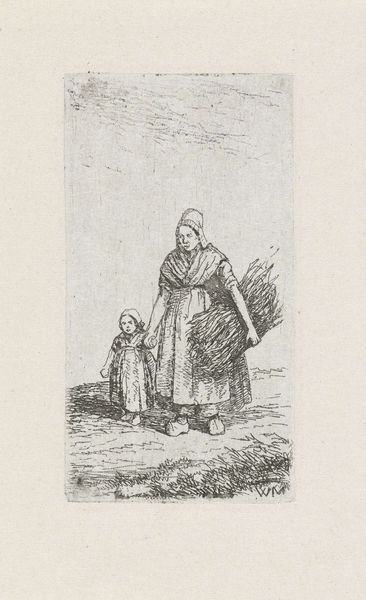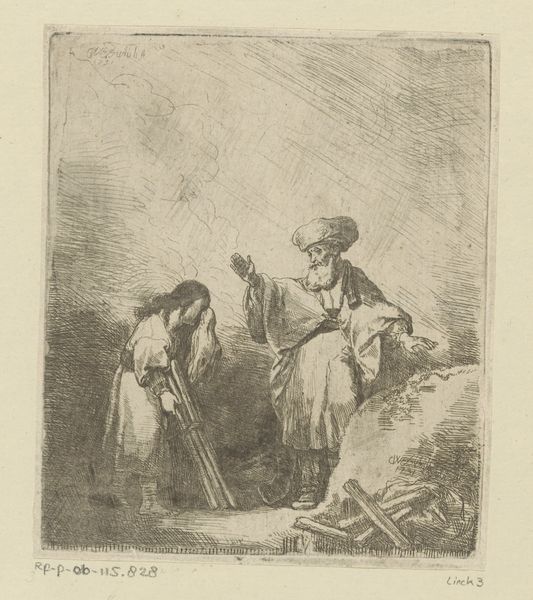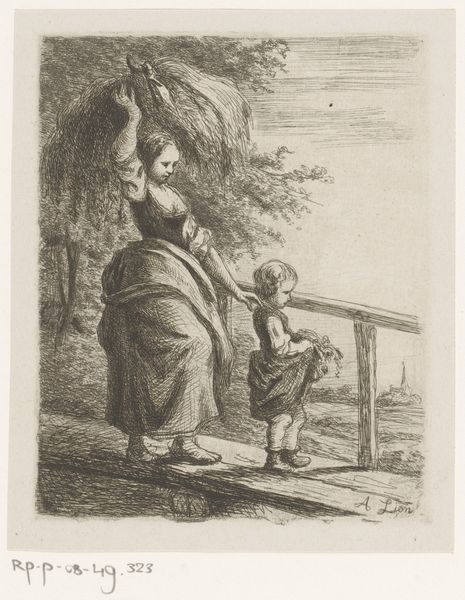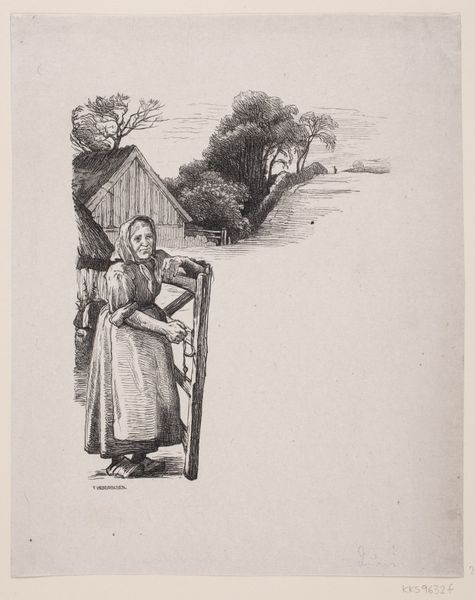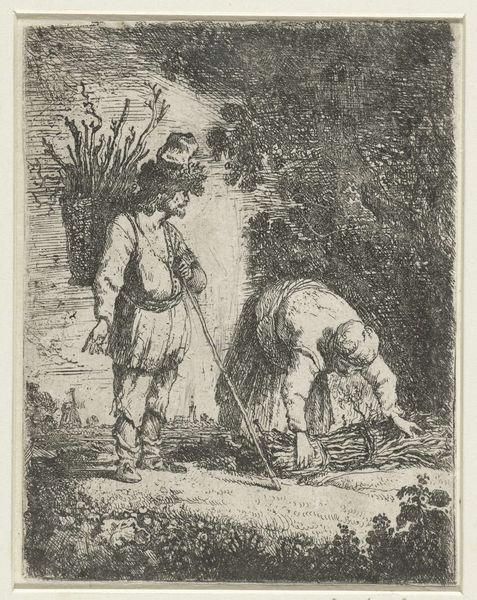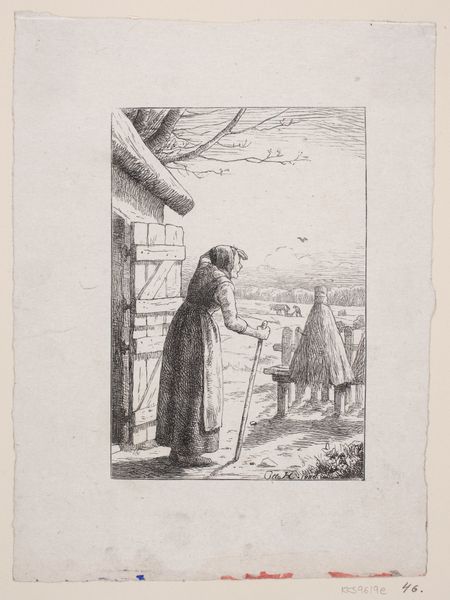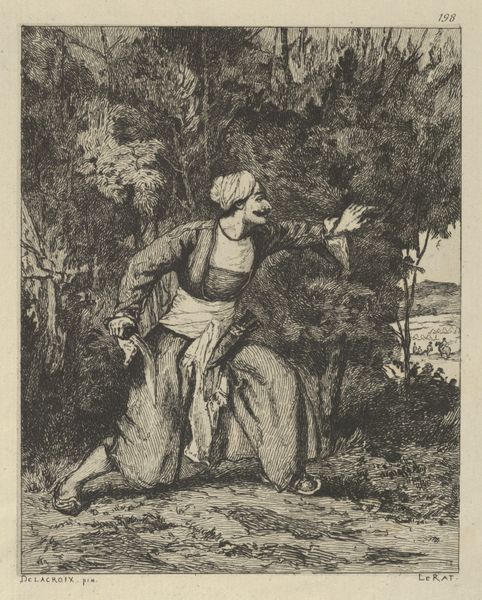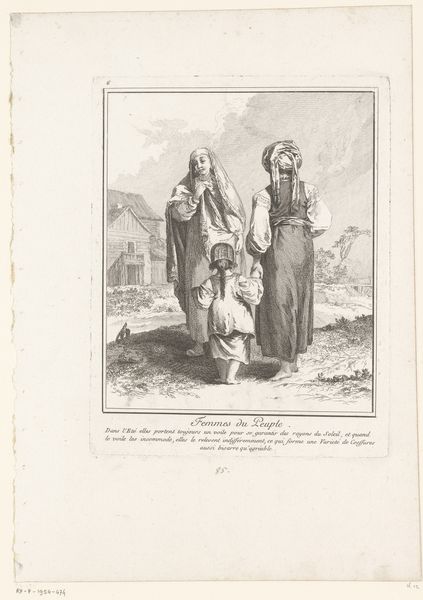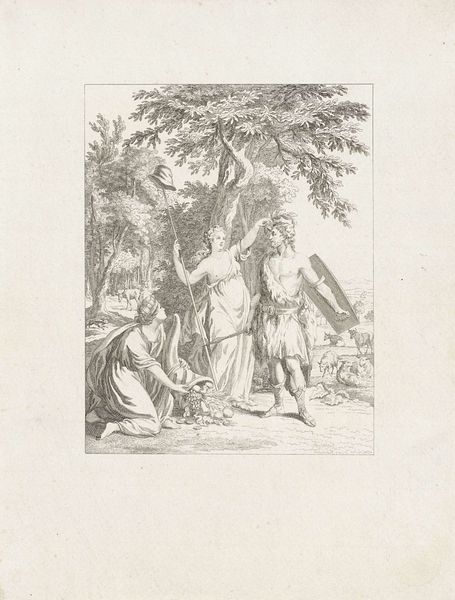
print, etching
# print
#
etching
#
landscape
#
romanticism
#
genre-painting
#
realism
Dimensions: height 93 mm, width 70 mm
Copyright: Rijks Museum: Open Domain
Curator: Welcome! We are standing before Christiaan Wilhelmus Moorrees' etching, "Two Women by a Water Pump," estimated to have been created sometime between 1811 and 1867. What are your initial impressions? Editor: Stark and almost melancholy. The subdued tones create a quietness, and I am immediately drawn to the stark contrast of the figures against the pale backdrop. The angularity of the well itself really centers the scene. Curator: It’s intriguing how the artist presents this mundane scene. Consider the social context—fetching water was a daily labor for many women. Moorrees, through the detailed etching process, elevates this everyday act, highlighting the toil and routine of their lives. Editor: But isn’t it the artist's manipulation of line and form that’s truly striking? Observe how the lines both define the figures and dissolve into the overall composition. The artist achieves a powerful realism using very simple components. Also, is that a cat perched above it all? Curator: Good eye! Note the interplay between realism and romanticism at play here. Yes, the inclusion of the cat does give it a touch of genre painting, grounding it in the real experiences of everyday life, but observe also the material reality of the print itself. This isn't an oil painting intended to impress nobility. Etchings like these would have circulated widely, accessible to a broader segment of society. Editor: Yet, if we look closer, isn’t it Moorrees’ masterful rendering of texture that enhances our visual journey? The rough surface of the stone and brick. It guides the eye while creating a captivating viewing experience independent of subject or context. Curator: It shows how even simple prints documented the transformation of social norms. How labour, performed and captured by an artist using fairly accessible means, is as deserving of our attention as traditionally high art. Editor: An elegant interpretation indeed, grounding art in the means of its creation. The close examination shows both form and process create a beautiful commentary. Curator: Precisely! And on that note, perhaps we can both encourage visitors to further reflect on these details.
Comments
No comments
Be the first to comment and join the conversation on the ultimate creative platform.
